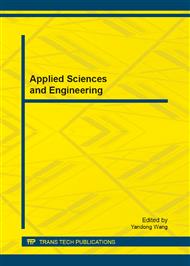p.727
p.734
p.740
p.745
p.750
p.755
p.760
p.764
p.768
Research and Implementation on Automatical Adjustment Method of Design Feature Model
Abstract:
Traditional engineering design and realization typically follows a sequential pattern as described by many research publications such as French, Pahl and Beitz. These design methodologies face challenges when time is essence in product realization lifecycle. In contrast, as the design process of a product evolves,this new method incrementally creates machining feature model and realizes concurrent design feature and machining feature modeling based on an algorithm developed for local feature recognition. In addition, the method accelerated the determination of the area that require to be recognized by utilizing a dynamic link list to record the changing information of topological elements, the design features of the model generated by the feature-based design, processing and feature recognition is generated through feature model.
Info:
Periodical:
Pages:
750-754
Citation:
Online since:
September 2012
Authors:
Keywords:
Price:
Сopyright:
© 2012 Trans Tech Publications Ltd. All Rights Reserved
Share:
Citation:


